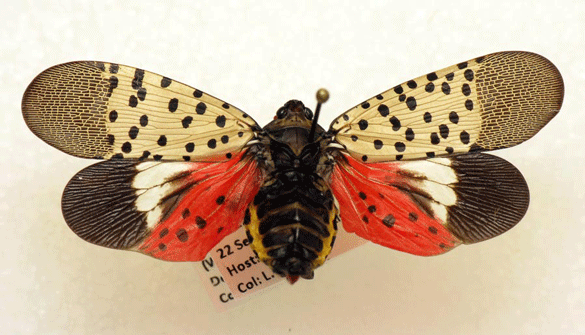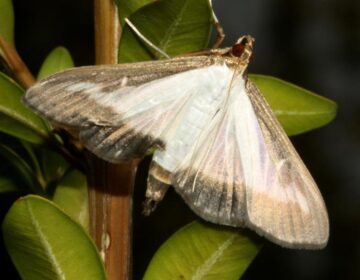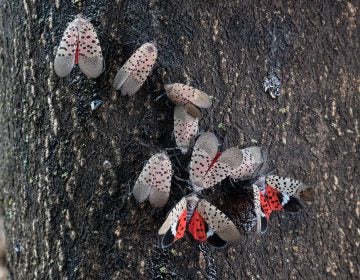Invasive insect 'hitchhikes' to Delaware
A non-native insect posing a potential threat to agriculture has hitched a ride to Delaware—and now a state investigation is underway to find out if it was a lone traveler.

(photo courtesy DE Dept. of Agriculture)
A non-native insect posing a potential threat to agriculture has hitched a ride to Delaware—and now a state investigation is underway to find out if it was a lone traveler, or if there are more.
The spotted lanternfly was discovered for the first time in the state last week in Wilmington, according to the Delaware Department of Agriculture.
The colorful, spotted, winged bug is a non-native plant hopper from Asia. The insect feeds on crops like peaches, apples, grapes and even roses. In addition to its threat to agriculture and gardens, the state is concerned about its ability to get around.
“They’ve been known to lay their eggs, not just on trees, but any smooth vertical surface,” said Stephen Hauss, cooperative agricultural pest survey coordinator with the Delaware Department of Agriculture.
“That’s why we’re calling it the ‘hitchhiker bug,’ because it’s known to catch a ride on all these different vehicles or forms of transportation and spread throughout the country. So to protect the agriculture in all the different states we have to confine them to where they’re currently located.”
The spotted lanternfly was introduced to Pennsylvania in 2011, but wasn’t found until 2014. It’s believed the insect traveled to the state through a stone tile shipment from China. Until now, Pennsylvania was the only place where the insect had been discovered.
Hauss said the bug has been a strain on Pennsylvania’s orchard and vineyard industry.
“It affects them because they have to enforce the movement of all these materials that might harbor the spotted lantern fly without them knowing it,” he said. “So it’s a huge cost to businesses to control them, using chemical and mechanical means.”

Now experts want to know how it arrived in Delaware, and if there are more. So far, investigators haven’t found any eggs—but Hauss said they’re difficult to find because they’re laid in trees and are concealed with a mud-like surface for protection.
“We weren’t surprised to find it—we were surprised we found just one,” he said. “There’s a lot of work to do. We don’t really know how it got here or how long it has been here. We don’t know if it’s just this one, if there are multiple or if they’re reproducing.”
Delawareans can learn more and participate in the investigation by going to de.gov/hitchhikerbug. A resident who believes they’ve found a spotted lanternfly can take a picture, collect a specimen or fill out a form on the website.
WHYY is your source for fact-based, in-depth journalism and information. As a nonprofit organization, we rely on financial support from readers like you. Please give today.





